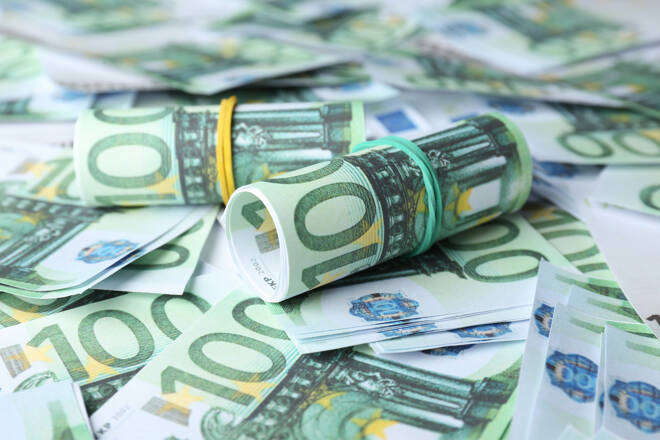Advertisement
Advertisement
EUR/USD: Eurozone GDP and Inflation in Focus Before Key US Economic Indicators
By:
While Eurozone GDP and inflation figures will draw interest, US wage growth and consumer confidence figures could define the outlook for inflation.
Highlights
- The EUR/USD gained 0.47% on Monday, ending the session at $1.06151.
- German Q3 GDP figures provided early support, with containment of the Middle East conflict easing demand for the US dollar.
- On Tuesday, German retail sales and Eurozone GDP and inflation figures will influence the EUR/USD before the US session.
Monday Overview
The EUR/USD gained 0.47%. Reversing a 0.03% loss from Friday, the EUR/USD ended the day at $1.06151. The EUR/USD fell to a low of $1.05472 before rising to a high of $1.06252.
German Retail Sales and Eurozone Economic Indicators in Focus
On Tuesday, German retail sales will garner investor interest. German private consumption accounts for over 50% of the German economy. A surprise decrease in consumption could indicate signs of a prolonged recession. Economists forecast retail sales to rise by 0.5% in September vs. a 1.2% decline in August.
However, Eurozone GDP and inflation figures may have more influence on the EUR/USD. Better-than-expected GDP numbers could ease fears of a prolonged euro area recession. Economists forecast the Eurozone economy to stall in Q3 vs. 0.1% growth in the previous quarter.
Inflation figures also need consideration. A significant drop in consumer prices could alleviate the pressure on the ECB to maintain higher interest rates for an extended period. Economists forecast the Eurozone annual inflation rate to soften from 4.3% to 3.2%. However, economists expect core inflation to remain sticky.
Sticky core inflation and better-than-expected GDP figures would enable the ECB to maintain a hawkish rate path. An elevated interest rate environment impacts borrowing costs and disposable income. A downward trend in disposable income could impact consumption, easing demand-driven inflationary pressure.
US Employment Costs and Consumer Confidence in the Spotlight
On Tuesday, US employment costs need consideration. A pickup in employment costs would signal higher wages and disposable income. An upward trend in disposable income could fuel consumption and demand-driven inflationary pressures, forcing a more hawkish Fed rate path. A more hawkish Fed rate path would increase borrowing costs, impacting disposable income and consumption.
Later in the session, investors will closely watch consumer confidence. A more marked decline in confidence would likely drive buyer appetite for the EUR/USD. Economists forecast the CB Consumer Confidence Index to decline from 103.0 to 100.0 in October.
A deteriorating consumer confidence backdrop would signal a pullback in consumer spending.
Short-Term Forecast:
Near-term EUR/USD trends hinge on the Fed and its economic, inflation, and interest rate outlook. A hawkish Fed (Wed) and a hotter-than-expected US Jobs Report (Fri) could send the EUR/USD to sub-$1.05.
EUR/USD Price Action
Daily Chart
The EUR/USD remained below the 50-day and 200-day EMAs, sending bearish price signals.
A EUR/USD move through the $1.06342 resistance level would support a break above the 50-day EMA. Eurozone and US economic indicators will be focal points ahead of the Fed interest rate decision on Wednesday.
However, a EUR/USD fall through the $1.05173 support level would bring sub-$1.05 and the trend line into play.
The 14-period Daily RSI, 50.25, suggests a EUR/USD break above the 50-day EMA before entering overbought territory.
4-Hour Chart
The EUR/USD sits above the 50-day EMA while sitting below the 200-day EMA, sending bullish near-term but bearish longer-term price signals.
A EUR/USD break above the 200-day EMA would support a move to the $1.06342 resistance level.
However, failure to move through the 200-day EMA would give the bears a run at the 50-day EMA and the $1.0550 handle.
The 14-period RSI on the 4-hour chart, 55.93, indicates a EUR/USD break above the $1.06342 resistance level before entering overbought territory.
About the Author
Bob Masonauthor
With over 28 years of experience in the financial industry, Bob has worked with various global rating agencies and multinational banks. Currently he is covering currencies, commodities, alternative asset classes and global equities, focusing mostly on European and Asian markets.
Advertisement
